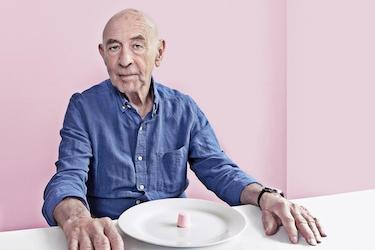Principle
Children’s self-control as young as preschoolers can pr dict outcomes a decade later.
Quote
The significant correlations between preschool delay time and adolescent outcomes, spanning more than a decade, were relatively large.
Mischel, W., & Others, A. (1989). Delay of Gratification in Children. Science, 244(4907), 933–937.
Research Story
Walter Mischel started the famous marshmallow experiments with 4-year-olds at Stanford. He later followed up at Columbia with two other researchers to explore whether self-control in children predicts adult outcomes.
In the marshmallow test, they showed the child a toy and said they could play with it later. They also taught them a game where the researcher leaves the room and the child summons them back by ringing a bell. They then show the kids a plate with a treat they like and a plate with more of that treat (like 1 marshmallow or two) and told the researcher will leave the room and that if they wait until the researcher returns, they can have the plate with more, but at any time they can ring the bell and the researcher will return and they can have the first plate. Then they leave for 15 minutes or until they ring the bell. They tracked the number of seconds the kids waited.
Ten years later, they asked parents to rated the kids in a variety of ways. Kids who waited longer in the marshmallow test were better academically and socially. They were more competent and self-assured, planned ahead, better able to concentrate, and cope with stress. They even had better SAT scores.
They thought that maybe the kids were thinking of how great the reward would be, so they did more experiments. When kids could see the reward or were asked to think about it, it had the opposite effect. They caved earlier.
In a series of related experiments they found that kids waited longer when given fun thoughts to distract them. They waited twice as long when shown a picture of the reward, but not the reward itself. Imagining a real reward to be a picture trippled their wait time to 18 minutes as opposed to imagining a picture to be a real reward, which dropped wait times to 6 minutes. It didn’t work to imagined another object, so more than just distraction is at work here. The best results were to have kids imagine the saltiness and crunch of a real pretzel while waiting for something sweet.
In a larger study they found that having the reward exposed (and therefore more tempting) measured self-control better and better predicted teen outcomes, than covering the reward, which didn’t predict outcomes. So having the reward exposed is the greater test of self-control.
When they talked about strategies, preschoolers wanted to see the reward, even though it ended up being least effective. Older kids realized it was tempting and chose to have the 2nd plate covered.
So What – Application
If the way we delay gratification matters, then we can develop strategies that will work better.
If you’re hungry now and tempted to snack, but you’re going to dinner in an hour, you could imagine a menu with a picture the dinner item on it. Or I suppose you could imagine how tasty and crunchy your favorite bag of chips would be when you’re at Cheesecake Factory and only have cheesecake options for dessert.

